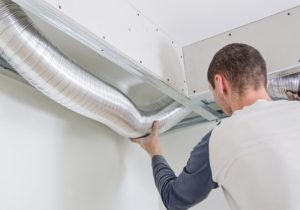According to the American Lung Association, Phoenix is the fifth-most polluted city in the nation in terms of air quality. However, as bad as our outdoor air is, the Environmental Protection Agency (EPA) says indoor air is usually far worse.
As the EPA points out, many scientific studies have found that indoor air is more polluted than outdoor air. This is true even for industrialized cities that are known for having poor outdoor air quality, such as Los Angeles and New York.
As a result, it’s critical to understand what indoor air pollution is and how to mitigate it. Otherwise, the air you breathe in your Phoenix home could put you and your family at risk.
Indoor Air Pollution Examples in Your Phoenix Home

Unfortunately, most Phoenix homes suffer from diminished indoor air quality (IAQ). Several pollutants stand out for their pervasiveness and danger here are some indoor air pollution examples to consider:
Radon
Radon is a colorless, odorless, radioactive gas that can lead to lung cancer. According to the Arizona Radiation Regulatory Agency, one out of every 15 Arizona homes has radon levels in excess of the EPA recommended action level of 4.0 picocuries per liter of air (4.0pCi/L).

Environmental Tobacco Smoke
Concentrated tobacco smoke inside a home endangers the very youngest and oldest occupants first, but everyone suffers ill effects from ETS. It causes increased rates of asthma, respiratory tract infections and mucous membrane irritation.
Biological Contaminants
A stew of unpleasant microorganisms can be swirling around your Phoenix home. Contaminants include molds, mildew spores, bacteria, viruses, animal dander, cat saliva, house dust mites, insect parts and pollen. These biological contaminants can cause illnesses such as allergic reactions, asthma, influenza, measles and even chicken pox.
Carbon Monoxide
Incomplete burning of fossil fuels, as from a faulty furnace or from a wood stove, can cause a buildup of carbon monoxide. This deadly gas is odorless and invisible. It interferes with oxygen in respiration and can lead to sickness and death.
Nitrogen Oxide
This colorless, odorless gas irritates mucous membranes in the eyes, nose and throat. Nitrogen oxide can cause shortness of breath after exposure to high concentrations.
Household Cleaning Products
Everything you spray, dab and smear inside your home can come back to pollute your air. This includes household cleaners, makeup, wax, paint, varnishes, disinfectants, degreasers and items used in hobbies.
Turn to ACE Home Services for All of Your Indoor Air Questions
Ace Home Services can test your IAQ, recommend air purifiers to eliminate most indoor pollutants and set up regular visits to monitor and replace air filters in your HVAC system. Contact Ace Home Services today at (602) 428-3341 to breathe more freely and safely tomorrow.
